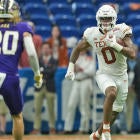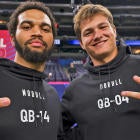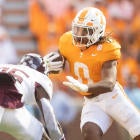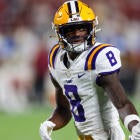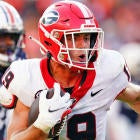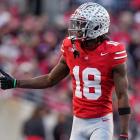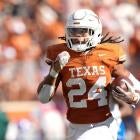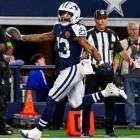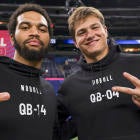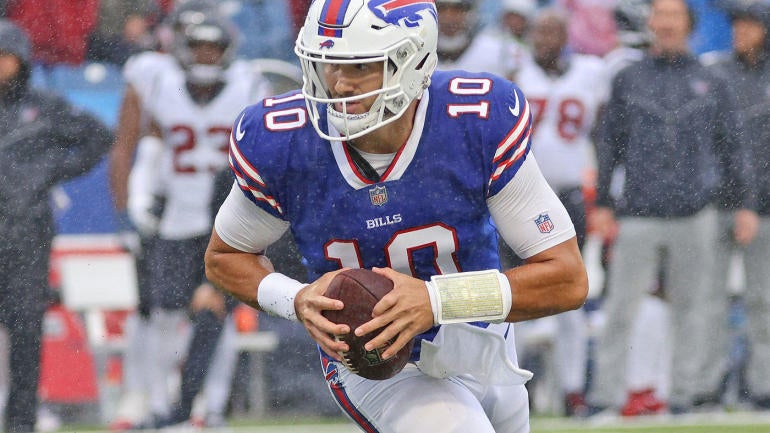
The Pittsburgh Steelers have their new starting quarterback after agreeing to a two-year deal with former No. 2 overall pick, Mitchell Trubisky. Trubisky spent last year in Buffalo, rehabilitating his image while backing up Josh Allen. Now he'll get his second chance as a starter after being replaced in Chicago.
Despite a couple of flashes, Trubisky struggled to be a consistent Fantasy option in Chicago, but you don't have to squint very hard to see a quarterback who could be better for Fantasy Football than real life. He's averaged 5.3 yards per carry for his career and averaged nearly five rush attempts per game in 2018. His 17-game pace as a starter was for 352 rushing yards and three touchdowns per season. That type of boost could make a league-average passer a borderline Fantasy starter.
The problem is that 2018 is also the only year Trubisky has performed like a league-average quarterback. His 6.7 career yards per attempt is well below average as is his four percent career touchdown rate. The hope in Pittsburgh is that Trubisky could have a Ryan Tannehill-like renaissance, and he has the weapons to do it. The next question will be whether the Steelers can build an offensive line that can protect Trubisky.
As for those weapons, there is nothing in Trubisky's career that suggests he'll be worse than Ben Roethlisberger has been since the start of the 2019 season. In fact, most numbers would suggest he'll be a slight upgrade. And the Steelers' new signal caller is most definitely an upgrade over Mason Rudolph. That being said, this does lock them in with a below-average quarterback. Any hope of a boost from the team acquiring a Deshaun Watson or Derek Carr is gone now.
The biggest question mark seems to be whether a mobile quarterback like Trubisky will target Najee Harris as often as Ben Roethlisberger did. The bright side there is that Tarik Cohen saw 92 targets (and a 19% target share) from Tubisky in 2019. In 2018, Cohen and Jordan Howard combined for more than 20% of Trubisky's targets. In other words, there is no reason to believe Harris will see a significant downtick in targets. If anything, Trubisky's mobility might open up a few more holes for the star running back.
The story is much the same for Diontae Johnson and Chase Claypool. Trubisky probably isn't a big upgrade for them as a passer, but he gives them a higher floor and ceiling than Rudolph would have. The risk comes for Johnson, because he was dominating targets with Roethlisberger at quarterback and there is at least some risk that Trubisky develops more rapport with Claypool. But in terms of their efficiency, I would expect something similar to the last two years or slightly better.
Pat Freiermuth could also be at a small risk, but I was expecting some regression from him anyway. It's tough to gauge Trubisky's history with tight ends, but there's nothing that stands out as particularly good or bad. The problem for Freiermuth was that his production was so heavily impacted by touchdowns that without a big increase in volume, regression is likely to knock him out of the top 12 tight ends.
From a rankings perspective there's very little changed by this signing. Trubisky vaults into the top-24 quarterbacks and is a low-end upside starter in two-QB leagues. Harris remains a surefire first-round pick, and top-five running back. Diontae Johnson is a high-end No. 2 receiver, while Chase Claypool is a late-round dart throw with upside. Freiermuth should not be drafted as more than a borderline starter.














